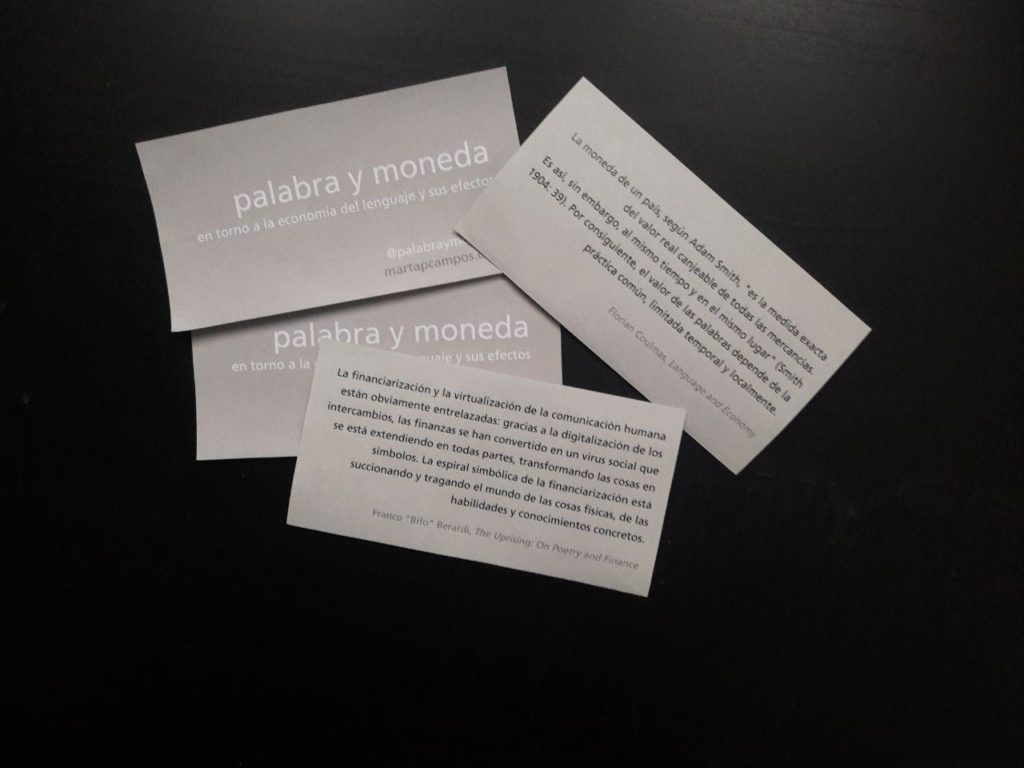palabra y moneda (word and coin)
Artistic research on the economy-language relationship initiated within the Open Call Hedy Lamarr at Etopia. Center for Art and Technology, Zaragoza (ES).
word and coin takes its name from the first chapter of Language and Economy, an essay with which the linguist Florian Coulmas laid the foundations of the young discipline we know today as the Economics of Language.
Based on the analysis of the contributions of linguists, economists and philosophers to this field of study, the exhibition space for the project will be intervened with elements that, from an artistic approach, invite reflection on the interrelationship between Economy and Language, between word and coin.

A safe stores valuable objects that must be protected from anyone who is not their rightful owner, but it can also store objects that have no value in themselves, such as pieces of paper. The box is open and in it we find banknotes of different colors and sizes. 5, 10, 20, 50, 50, 100, 200 and 500 Euros. The color of each of the seven types corresponds to the average color of the face and back of the banknote it represents, calculated thanks to the application created by Matthias Klein, which can be found on the web at http://matkl.github.io/average-color/ and with images of scanned banknotes, found on the website of the Spanish newspaper El País.
In these bills we can read brief fragments extracted from the books that have marked the beginning and the first steps of this research in which language, language and economy are interrelated. For these authors, this confluence will be the place on which our society and constitution as subjects is built.


Countries whose future economic trend is downward. On the IMF website there is the IMF DataMapper application, in which, among other things, we find information on the gross domestic product (GDP) growth of 184 countries. In addition to presenting data on the GDP of these countries to date, it is also possible to see the GDP that these countries are expected to have in the next four years.
How is this data calculated? Did the IMF in 2006 somehow calculate the financial crisis of 2008? Can we calculate the trend of these countries based on figures that seem to be invented? Do these forecasts function as examples of the ‘self-fulfilling prophecy’?
Printed on vinyl, we find the list of those countries whose economies will trend downward according to data shared by the IMF.
Next to them, in a small safe, are listed all the endangered languages spoken in those countries.
Are these languages more likely to disappear?


EXHIBITED AT:
2019. palabra y moneda, Etopia. Center for Art and Technology, Zaragoza (ES).
